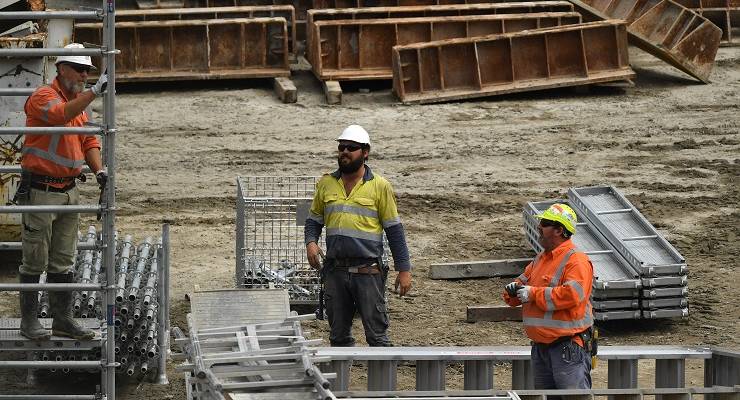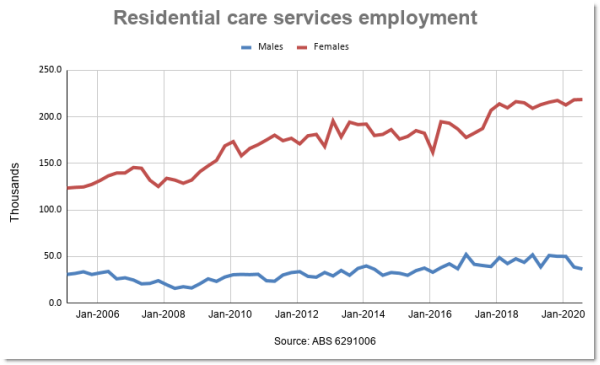
Yesterday the Australian Bureau of Statistics (ABS) released its quarterly detailed look at employment, and the results are illuminating in terms of which industries were bouncing back into the second half of the year and which weren’t.
In February, before the pandemic hit, the workforce had just topped 13 million people. In the three months to May, it then lost the best part of a million jobs, with the workforce falling to 12.16 million on a seasonally adjusted basis.
By August, the workforce had put on around half the lost jobs in net terms, rising to 12.58 million. But some industries performed better than others. Retail recovered nearly all of its lost jobs to return to February levels. Accommodation and food services, understandably, lost around a third of its workforce by May, but had only restored 130,000 jobs, or just under half.
The professional services sector, however, had barely begun recovering by August — having lost 60,000 jobs, it had only put back on 6000. Another services sector, administrative and support, suffered a similar fate. Education and training recovered around half its lost jobs, while health and social care, which saw only a small loss of jobs as private hospitals were temporarily shut down, had fully recovered.
The arts and recreation industry, which was smashed by COVID-19, had just started recovering. It lost 90,000 of around 250,000 jobs, but had put around 50,000 of those back on by August.
Construction tracked a different pattern — it lost only a small number of jobs, 10,000, in the three months to May but then lost another 10,000 in the three months to August; manufacturing only recovered 10,000 of the 60,000 jobs it lost. Indeed, in original terms manufacturing set a new all-time low in employment in August of just 843,000.
Drill down into individual sub-sectors and some more puzzling things emerge. The residential care sector, where a key issue is the lack of staff per resident to maintain standards of care, lost 6000 jobs in the three months to May and then another 2000 in August.
That may just be a statistical blip that will be fixed in subsequent quarters, except that it was entirely men. While the number of women working in residential care, 218,600, is an all-time high, the number of men — 36,600 — is the lowest in some years, though previous declines have been reversed.

And according to the ABS, tertiary education employment has surged during the pandemic: the sector has gained 36,000 jobs since February, and its August level of 291,000 was an all-time high — an outcome thousands of unemployed academics might find confusing.
In the professional services sector, the net change in male jobs between February and August was zero, while female services jobs fell 10%, or around 50,000, and hadn’t begun recovering.
And the fall in manufacturing was mainly down to a slump in food manufacturing, which lost more than a fifth of its 230,000 workforce in the six months between February and August.








Tertiary education employment rose? If I could be bothered I’d find out what jobs are counted in that grab bag. I was one of 500 or so permanent employees to be released (on good behaviour) from servitude at just one university. That doesn’t include the many casuals, sessional academics and fixed term employees ‘let go’.
Methinks perhaps these ABS figures are highly questionable. The ABS needs a complete overhaul on data gathering methodologies. Much of what they produce is unbelievable, literally.
A good start would be a saner definition of employment than 2 hours per week.
Hard to scry those entrails, eh Bernard?
Here’s a tip – haruspex is for losers, esp the chook.
You really need to stick your head outside the window and smell the …stench.